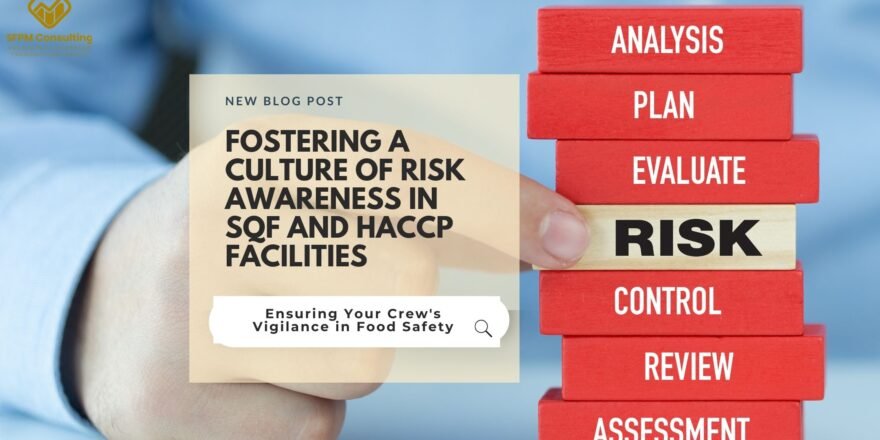From HACCP to SOPs: Understanding How to Use Food Safety Template

Running a food manufacturing facility means we must strictly adhere to food safety standards and regulations.
To meet our food safety standards and regulations, we will need to make sure we have solid and reliable food safety programs that include food safety procedures and forms.
In this blog, we will showcase how we use our SQF and HACCP templates to build solid food safety procedures that are easily customized. Benefit from my expertise in helping food businesses pass their SQF and HACCP audits even when my clients think it is impossible.
Introduction to Food Safety Templates: What Are They and Why Are They Important?
Food safety templates outline the procedures and protocols that must be followed to ensure food safety in a business. These templates serve as a guide for employees, providing them with clear instructions on handling, storing, and preparing food safely. They also help businesses comply with food safety regulations and standards set by regulatory authorities.
Examples of food safety templates we offer include SQF templates, HACCP templates and SFCR templates that are customized to meet the SQF, HACCP and CFIA standards.
The benefit of using a template primarily focuses on the ability to write good procedures or SOPs without much thinking or much skills. A good SQF template will give you an outline of the requirements and guidance you can customize for your operations.
Our food safety templates offering also include Standard Operating Procedures (SOPs), Standard Operating Procedures (SOPs), Hazard Analysis Critical Control Point (HACCP) plans, and Good Manufacturing Practices (GMPs).
Benefits of Implementing a Food Safety Template in Your Business
Implementing a food safety program in your business can have numerous benefits. Firstly, it helps ensure your business complies with food safety regulations and standards. Following the procedures outlined in the procedures you develop using a template starter, you can demonstrate to regulatory authorities that you are taking the necessary steps to ensure food safety.
Secondly, a food safety template starter can help you improve your operations’ overall safety. By providing clear instructions on handling, storing, and preparing food safely, you can minimize the risk of contamination and foodborne illnesses. This protects your customers and helps protect your business from potential legal issues and damage to your reputation.
Furthermore, implementing a food safety template can save your business time and money. Having standardized procedures in place can streamline your operations and reduce the risk of errors and accidents. This can increase efficiency and productivity, ultimately saving you time and money in the long run.
Key Components of a Comprehensive Food Safety Template
A comprehensive food safety template should include several key components to ensure the safety of your operations. Firstly, the food safety template should indicate the intention or objective of the procedures and indicate the responsibilities of your staff.
Additionally, a comprehensive food safety template should include procedures for monitoring and documenting food safety practices along with responsibilities and training requirements. This includes instructions on how to meet the objectives of the procedures, the procedures to minimize or control relevant food safety risks.
It is important to note that a food safety template should be customized to fit your business’s specific needs. While general guidelines and best practices can be followed, it is important to consider the unique aspects of your operations and tailor the template accordingly.
Challenges in Implementing a Food Safety Template and How to Overcome Them
Implementing food safety procedures in your business can come with its own set of challenges. One common challenge is resistance from employees who may resist change or not fully understand the importance of food safety. To overcome this challenge, it is important to provide proper training and education to employees, explaining the benefits of the template and the importance of following the procedures outlined in it.
Another challenge is ensuring employees are properly trained on the procedures. It is important to provide comprehensive training to all employees, ensuring they understand the procedures and protocols outlined in the written procedures. This can be done through regular training sessions, hands-on demonstrations, and ongoing monitoring and feedback.
Furthermore, businesses may face challenges in maintaining consistency and compliance with the food safety procedures, especially when there are discrepancies between the standards versus the actual employee practices.
Thus, it is important to have a system for monitoring and auditing food safety practices to ensure that employees follow the procedures outlined in the template. Regular inspections and audits can help identify any areas of non-compliance and allow corrective action to be taken.
Effective SOP implementation with templates
When we use templates to build our procedures, it is important to note that they are a guide and we need to include our actual operational practices within the SOPs. Don’t forget to provide training, regularly monitor the procedure implementation and documentation to ensure they are effective, and listen to feedback to improve your SQF or HACCP procedures.
Want a more powerful SOP Implementation Strategy?
I help food professionals take SQF from scratch to fullyworking SQF programs. The same with HACCP certification.
Read more /testimonial: https://maps.app.goo.gl/ZBrKe5D36Jq5YChE8


